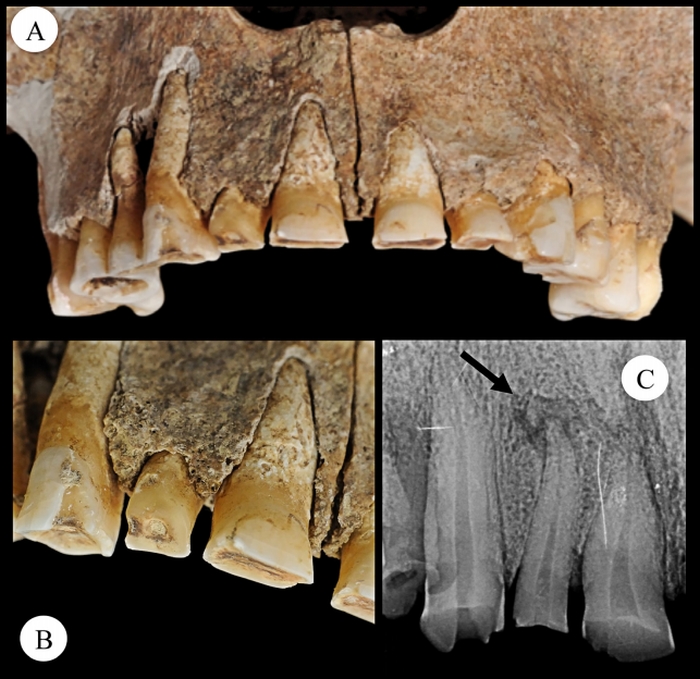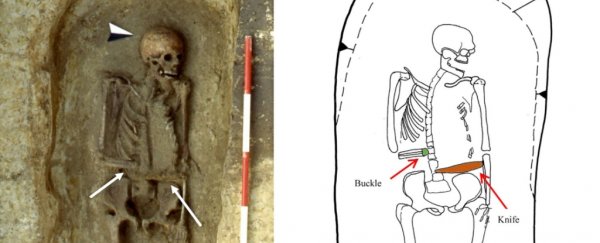In 2018, archaeologists described a truly fascinating puzzle. It looks like this medieval Italian man went through life with a knife attached to his arm, in place of his amputated hand.
The skeleton in question was found in a Longobard necropolis in the north of Italy, dating back to around the 6th to 8th centuries CE. Hundreds of skeletons were buried there, as well as a headless horse and several greyhounds, but this particular skeleton stood out.
He was an older male, aged between 40 and 50, and his right arm had been amputated around the mid-forearm.
The researchers, led by archaeologist Ileana Micarelli of Sapienza University in Rome, determined that the hand had been removed by blunt force trauma, but exactly how or why is impossible to tell.
"One possibility is that the limb was amputated for medical reasons; perhaps the forelimb was broken due to an accidental fall or some other means, resulting in an unhealable fracture," they wrote in their paper, published in the Journal of Anthropological Sciences in 2018.
"Still, given the warrior-specific culture of the Longobard people, a loss due to fighting is also possible."
On closer examination, the ends of the bone showed evidence of biomechanical pressure – reshaping of both bones to form a callus, and a bone spur on the ulna. These are consistent with the sort of pressure that might have been applied by a prosthesis.
Further evidence on the skeleton supports this hypothesis. The man's teeth showed extreme wear – a huge loss of enamel, and a bone lesion. He'd worn his teeth so far down on the right side of his mouth that he'd likely opened the pulp cavity, causing a bacterial infection.
What's that got to do with a prosthesis? He was probably using his teeth to tighten the straps that held it in place.
 Dental wear and the bone lesion. (Micarelli et al.)
Dental wear and the bone lesion. (Micarelli et al.)
His shoulder showed evidence of this too – it had developed a C-shaped ridge of bone from holding the shoulder in an unnaturally extended position to tighten the prosthesis in his mouth. The only way this ridge could have formed is if the movement was frequent.
All the other male burials with knives at the site had their arms and their weapons laid at their sides. But not this guy.
He had his right arm bent at the elbow, the arm laid across his torso. Next to it was a knife blade, the butt aligned with his amputated wrist. Also at the amputation site, archaeologists found a D-shaped buckle, and decomposed organic material – most likely leather.
This suggests a leather cap over the amputated limb, a buckle used for fastening – and a knife attached to the cap, although the purpose is unclear. However, given the advanced healing of the bone, it is clear the man lived for a long time after his hand had been amputated.
"This Longobard male shows a remarkable survival after a forelimb amputation during pre-antibiotic era. Not only did he adjust very well to his condition, he did so with the use of a culturally-derived device, along with considerable community support," the team wrote in their paper.
"The survival of this Longobard male testifies to community care, family compassion and a high value given to human life."
The team's paper was published in the Journal of Anthropological Sciences, where it can be read in full.
A version of this article was originally published in April 2018.
